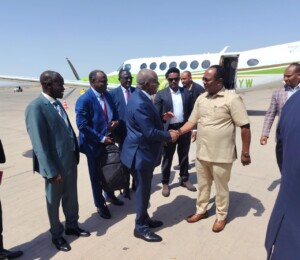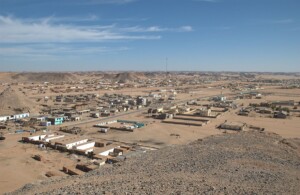Sudan committee to investigate burial of three slain protestors
On Monday, Sudan’s acting Attorney-General instructed the formation of a committee of inquiry into the burial of three unidentified bodies of protestors last week.
The bodies were found near the Khartoum sit-in after it was violently dismantled by security forces and militiamen on June 3, together with more than 100 others killed. The sit-in was set up by protestors calling for the ousting of President Omar Al Bashir and a civilian government in front of the army command in Khartoum in early April.
Acting Attorney-General Abdallah Ahmed ordered the inquiry after Khartoum state health authorities announced on Wednesday that three bodies of victims of the “June 3 massacre” were buried at El Sahafa cemetery after efforts to identify them failed. The burial contravenes Sudanese law.
The committee is to submit its final report within 15 days.
The director of the Bashayer mortuary, Ageel Suwar, was dismissed from his function on Sunday, because he reportedly gave permission for the burial. Suwar himself said the burial was based on permission from the Public Prosecutor.
DNA match
On Thursday, the body of protestor Gusei Hemeto, who went missing as well during the “June 3 massacre”, was buried in Khartoum.
Hemeto’s body was found in the Nile, tied to a block of concrete, three days after the break-up of the sit-in. He was unidentifiable because of a gunshot in his head. His body remained in the morgue of the Omdurman Teaching Hospital for four months, until a DNA test proved his identity.
 Unidentified victims of the violent dismantling of the sit-in in front of the General Command of the Sudanese Army in Khartoum on June 3 (RD)
Unidentified victims of the violent dismantling of the sit-in in front of the General Command of the Sudanese Army in Khartoum on June 3 (RD)
On Monday, Sudan’s acting Attorney-General instructed the formation of a committee of inquiry into the burial of three unidentified bodies of protestors last week.
The bodies were found near the Khartoum sit-in after it was violently dismantled by security forces and militiamen on June 3, together with more than 100 others killed. The sit-in was set up by protestors calling for the ousting of President Omar Al Bashir and a civilian government in front of the army command in Khartoum in early April.
Acting Attorney-General Abdallah Ahmed ordered the inquiry after Khartoum state health authorities announced on Wednesday that three bodies of victims of the “June 3 massacre” were buried at El Sahafa cemetery after efforts to identify them failed. The burial contravenes Sudanese law.
The committee is to submit its final report within 15 days.
The director of the Bashayer mortuary, Ageel Suwar, was dismissed from his function on Sunday, because he reportedly gave permission for the burial. Suwar himself said the burial was based on permission from the Public Prosecutor.
DNA match
On Thursday, the body of protestor Gusei Hemeto, who went missing as well during the “June 3 massacre”, was buried in Khartoum.
Hemeto’s body was found in the Nile, tied to a block of concrete, three days after the break-up of the sit-in. He was unidentifiable because of a gunshot in his head. His body remained in the morgue of the Omdurman Teaching Hospital for four months, until a DNA test proved his identity.
Our editorial independence means that we can continue to provide factual updates about political developments to Sudanese and international actors, educate people about how to avoid outbreaks of infectious diseases, and provide a window to the world for those in all corners of Sudan. Support Radio Dabanga for as little as €2.50, the equivalent of a cup of coffee.












 and then
and then